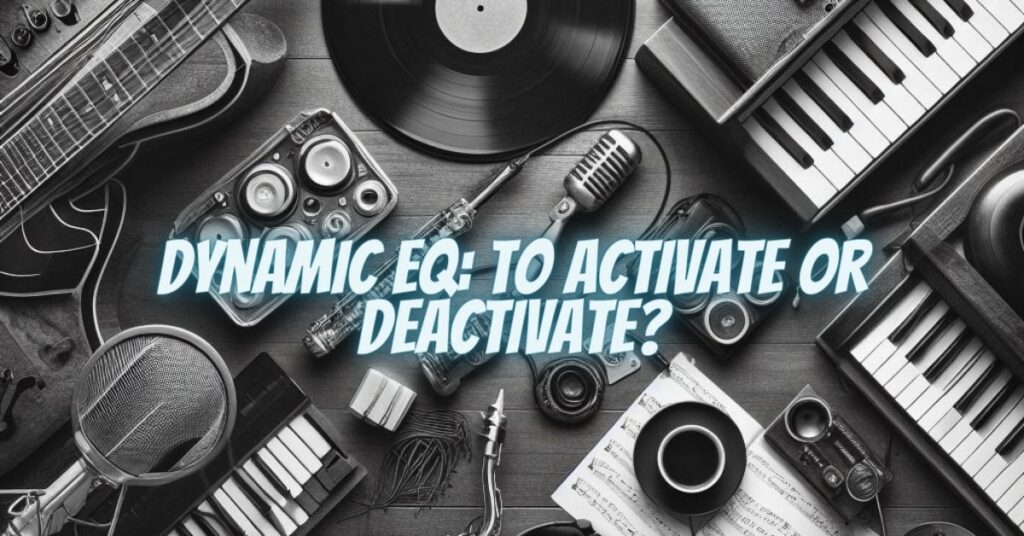Dynamic EQ is a powerful audio processing tool that offers real-time, dynamic control over the tonal balance of your audio signal. However, like many audio techniques, it’s essential to understand when and how to use it effectively. In this article, we will explore the decision-making process behind whether to turn dynamic EQ on or off in your audio production, mixing, or live sound reinforcement scenarios.
What Is Dynamic EQ?
Dynamic EQ is a type of equalization that combines the functionality of both traditional equalization and compression. It allows you to automatically adjust the gain of specific frequency bands in response to the input signal’s level. This means that dynamic EQ can be a valuable tool for addressing problematic frequencies that fluctuate in intensity during a performance or recording.
When to Turn Dynamic EQ On:
- Taming Resonances: Dynamic EQ is highly effective at taming resonant frequencies in a room or within a specific instrument. When you encounter problematic resonances that vary in intensity, dynamic EQ can automatically reduce these frequencies when they become excessive.
- Managing Sibilance: For vocal recordings or live sound, dynamic EQ can be an excellent tool for managing sibilance (harsh “s” and “sh” sounds). It automatically attenuates sibilant frequencies when they become too pronounced.
- De-essing: Dynamic EQ can be a key component of de-essing, a process to reduce the prominence of sibilant frequencies in vocal recordings. By targeting sibilance only when it occurs, dynamic EQ ensures a more transparent result.
- Balancing Live Sound: In live sound reinforcement, dynamic EQ can help maintain a consistent tonal balance during a performance. It ensures that the mix sounds good even when different instruments or vocalists vary in intensity.
- Corrective EQ: When dealing with inconsistent tonal imbalances that fluctuate, dynamic EQ can be a valuable tool for real-time correction without introducing unwanted coloration to the audio.
When to Turn Dynamic EQ Off:
- Creative Sound Shaping: If you are looking to add color, character, or tonal changes that are consistent throughout the audio, static equalization or other processing tools may be more suitable.
- Tonal Shaping in Mixing: During mixing, when you are aiming to shape the overall tonal character of an instrument, turning off dynamic EQ in favor of static EQ adjustments can provide more control.
- Global Tone Control: For tasks that require global tonal adjustments to an audio source or track, static EQ may offer more precise and predictable results.
- Sonic Transparency: If your goal is to maintain the most transparent audio quality without the added processing of dynamic EQ, static equalization may be preferable.
The decision of whether to turn dynamic EQ on or off depends on your specific audio needs and objectives. Dynamic EQ is a powerful tool for addressing dynamic tonal imbalances, such as room resonances, sibilance, or inconsistent performances. It shines in scenarios where dynamic control is crucial. However, for creative sound shaping or global tonal adjustments, static EQ may be the preferred choice to maintain complete control and transparency. Ultimately, the right choice depends on your audio goals, the characteristics of the audio material, and your experience and expertise in audio processing.


